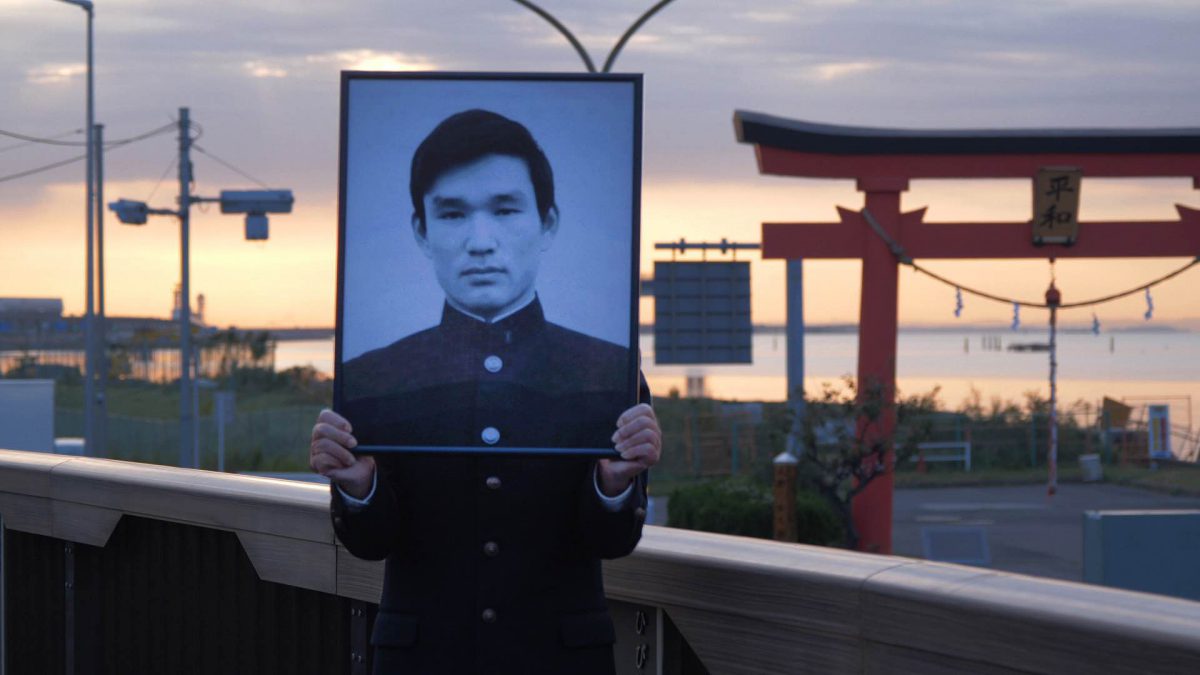Film Criticism Workshop
Up and Down
Whiplash of the Dead by Daishima Haruhiko

Left-wing organizations and their struggles for social change have always held an important place in Yamagata International Documentary Film Festival. After all, one of the awards is named after the great political documentarian Ogawa Shinsuke. And no movie in this year’s festival program reminds us better of that than Whiplash of the Dead, Daishima Haruhiko’s three-and-a-half-hour opus about the death of the Kyoto University student and radical left-wing organization Chukaku member Yamazaki Hiroaki during the First Haneda Incident on October 8, 1967.
The outlines of what happened on that day are well known to everyone even vaguely interested in Japanese countercultures or alternative cinema and music. The protesting students blocking Benten bridge, leading to Haneda Airport. The fights between the helmet-wearing and pole-wielding Chukaku faction and the police. The death of Yamazaki Hiroaki. The numerous other clashes, usually called incidents or struggles, between the radical left-wing student organizations and the government. All these images, each of them so ingrained in our memories through the work of photographers like Watanabe Hiromi and Kitai Kazuo and directors like Wakamatsu Koji.
All this renders making a new movie on this topic a difficult undertaking. But Daishima Haruhiko is not a director who is afraid to tackle such subjects. His previous two documentaries are about the Narita Airport protests, a struggle (continuing up to the present day) by villagers and students against the Japanese government, a topic associated by many with Ogawa Shinsuke’s best-known works.
Similarly to his previous films about Narita, Daishima chooses to tell the story through long and minimally edited talking-head interviews with a large pool of interviewees. And by long, I really mean long. Some of the interviews continue for many minutes without a single cut. Sometimes we see the director’s hand coming into frame or hear him prod the people he speaks with, most of them members of Chukaku, all of them friends of Yamazaki. And when he does, or when cherished memories of their friend and the time they spent together organizing protests and demos appear, or, later, when they have to think of the day he died, they grow quiet. Sometimes for a long time. While other directors might choose to cut those moments away, “hiding” them with archival footage, Daishima does the exact opposite. Instead, he seems to linger on them, knowing that it is precisely through these moments of intense quiet we can see how much Yamazaki Hiroaki meant for his friends and for the Left as a whole. At times, it is difficult to watch, especially when we see his older brother remembering the day he saw his young brother’s corpse, or when a previously talkative friend stands on the bridge, unable to say much. It is very intimate and raw and hard to endure.
Whiplash of the Dead isn’t only about Yamazaki’s life and his untimely death on Benten Bridge. It is as equally a film about Chukaku and the militant left after his passing. This we see not only from the fact that it is divided into two parts of somewhat equal length (titled “Part 1” and “Part 2” in English and with the kanji for up and down in Japanese), but also from its original title, After You Died. Thus, the movie becomes more about what happened after Yamazaki’s passing than what led to it. To be more precise, what happens with the organization and their struggle for a revolution. And as all of the interviewees say, it all becomes corrupt. The organization they have dedicated their youth to becomes dictatorial and petty, fighting for power with other militant groups rather than a social revolution against the government. So, all of them quit. Most of them less than a year after his passing. They simply couldn’t endure it.
Reaching the end of this long and emotionally draining documentary, the kanji used to title the two parts start to make much more sense. Yamazaki’s death is not simply the first of many in the continued clashes between the protesters and the police. He is not just an unlucky young man fallen victim to police brutality. Rather, he is a martyr whose death is a watershed moment for the radical left movement. He even seems to have gone to the bridge with the idea of sacrificing himself for the revolution, as a letter his brother shares with us seems to imply. And yet, instead of leading to a revolution, his death leads to the movement falling into a downward spiral of decay and unnecessary violence. As such, Yamazaki Hiroaki represents the highest point of the radical left struggle for change, and his self-sacrifice might have been in vain.
Daishima bookends the film with two long takes of himself. He is standing on Benten Bridge on a rainy autumn day. It is probably October 8th. He is holding a large framed photograph of Yamazaki Hiroaki in front of his torso. It is the same photograph used at his funeral. Daishima is wearing the same student uniform as the young man. The physical outlines of director and subject start to blur. The entire time, there is a dissonant and loud jazz-tinged improv freakout by turntablist Otomo Yoshihide. In this numbing noise we realize that though the radical left organizations might have failed us, the struggle for revolution didn’t die with them, and it will never will. As such, Yamazaki Hiroaki’s death is not and never will be in vain.
Martin Lukanov
